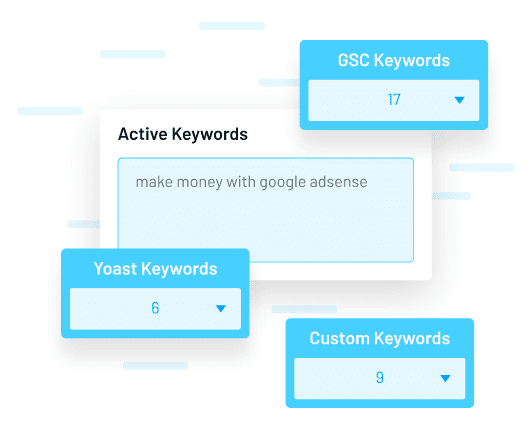
In a digital landscape where content is abundant and competition is fierce, standing out requires more than just good writing. It demands a strategic approach that leverages both quality and visibility. Enter the skyscraper technique—a powerful link-building strategy that helps you create content so compelling it naturally attracts backlinks from high-authority sites. Whether you’re an SEO professional or a small business owner, mastering this method can significantly boost your website’s authority and search rankings.
This article will guide you through the skyscraper technique step by step, showing how to identify top-performing content, improve upon it, and reach out to secure valuable backlinks. By the end, you’ll have a clear roadmap to implement this strategy effectively in 2024.
What Is the Skyscraper Technique and Why It Matters
The skyscraper technique is a content marketing and link-building strategy developed by Brian Dean of Backlinko. The name comes from the idea of building a “taller skyscraper” than existing content on a given topic. Instead of creating something entirely new, you take a piece of content that already has a strong backlink profile and improve upon it to make it even more valuable.
Why does this matter? Because search engines like Google prioritize content that provides the most value to users. When you create content that’s more comprehensive, up-to-date, or visually engaging than what’s already ranking, you increase your chances of outranking competitors and earning their backlinks.
In 2024, with AI-driven search results and Answer Engine Optimization (AEO) becoming more prominent, the skyscraper technique remains relevant. High-quality, authoritative content is still the foundation of successful SEO, and the skyscraper method ensures your content is not only visible but also trusted by both users and search algorithms.
How the Skyscraper Technique Impacts SEO Performance
The skyscraper technique impacts SEO performance in several key ways:
- Boosts Domain Authority: By securing backlinks from high-authority websites, your site gains credibility and trust, which directly improves your domain authority.
- Increases Organic Traffic: Better content means better rankings, leading to higher visibility in search results and more organic traffic.
- Improves User Engagement: Enhanced content with visuals, data, and actionable insights keeps users on your page longer, reducing bounce rates and improving dwell time.
- Supports AEO: As AI systems increasingly rely on authoritative sources, skyscraper content becomes a valuable asset for appearing in featured snippets and AI-generated answers.
For example, a case study by HubSpot showed that using the skyscraper technique brought over 70,000 page views to a single post. This demonstrates the real-world impact of the technique when executed correctly.
Step-by-Step Implementation Framework
1. Identify the Right Topic
Start by finding a topic that aligns with your niche and has a high number of backlinks. Use tools like Ahrefs, SEMrush, or seoClarity to analyze top-ranking pages and see which ones have strong backlink profiles.
Look for content that:
– Has at least 50+ referring domains
– Is relevant to your audience
– Has room for improvement (e.g., outdated information, lack of depth)
Once you’ve identified a target topic, use keyword research tools to find related terms and ensure your content covers all aspects of the subject.
2. Create Superior Content

Now it’s time to build a better version of the existing content. Focus on making your content:
– More In-Depth: Add more details, examples, and explanations.
– Up-to-Date: Ensure the information is current and reflects the latest trends.
– Visually Engaging: Include infographics, videos, and charts to enhance user experience.
– Actionable: Provide readers with practical takeaways or resources they can use.
For instance, if you’re improving a blog post about “how to start a blog,” add sections on choosing a niche, setting up hosting, and optimizing for SEO. You might also include a downloadable checklist or template.
3. Perform Email Outreach

The final step is to reach out to websites that are currently linking to the original content and ask them to link to your improved version instead. Tools like Hunter.io or ZoomInfo can help you find contact emails.
Your outreach should be:
– Personalized: Mention specific parts of their content that you found useful.
– Beneficial: Highlight the value your content adds.
– Professional: Keep the tone polite and concise.
Here’s a sample email script:
Subject: Update Outdated Content
Hi [First Name],
I hope you’re doing well. I recently read your article on [topic] and found it very helpful. I noticed you linked to [competitor’s content]. While it was useful, I noticed it was a bit outdated.
I’ve written a more updated version of this topic on my blog, complete with additional insights and visuals. If you’d like, you can update your link to point to my post instead.
Let me know if you need any further details.
Best regards,
[Your Name]
Real or Hypothetical Case Study

Let’s say you’re targeting the keyword “how to grow a YouTube channel.” You find a popular blog post with 1,000+ backlinks but notice it lacks recent statistics and video tutorials. You create a new post with up-to-date analytics, video tips, and a downloadable checklist.
After reaching out to 100+ websites, you secure 15 backlinks from high-authority sites. Over six months, your traffic increases by 30%, and your domain authority jumps from 35 to 48.
This shows how the skyscraper technique can deliver measurable results when executed properly.
Tools and Techniques for the Skyscraper Technique
To streamline the process, use these tools:
- Ahrefs – For backlink analysis and competitor research.
- SEMrush – To identify high-ranking content and track progress.
- Hunter.io – For finding email addresses of potential outreach targets.
- Canva – For creating engaging visuals and infographics.
- Grammarly – To ensure your content is error-free and professional.
- Google Analytics – To monitor traffic and engagement after publishing.
Future Trends and AI Implications
As AI continues to shape the digital landscape, the skyscraper technique will become even more critical. Search engines and AI assistants like ChatGPT rely on high-quality, authoritative content to provide accurate answers. By creating content that stands out, you increase the likelihood of being cited in AI responses and featured snippets.
In 2025, expect more emphasis on:
– Content Depth: Long-form, well-researched content will be favored.
– Multimodal Content: Videos, images, and interactive elements will play a bigger role.
– User Experience: Websites with clean design and fast loading times will rank higher.
To stay ahead, focus on creating content that not only meets SEO standards but also delivers real value to users.
Key Takeaways
- Identify high-backlink content in your niche using SEO tools.
- Create superior content that adds value, updates information, and enhances user experience.
- Reach out to websites that link to the original content to secure backlinks.
- Use tools like Ahrefs, Hunter.io, and Canva to streamline the process.
- Focus on quality over quantity to build a natural, authoritative link profile.
By implementing the skyscraper technique, you’ll not only improve your search rankings but also build long-term authority and trust with your audience.
Meta Title: How to Use the Skyscraper Technique for Effective Link Growth in 2024
Meta Description: Learn how to use the skyscraper technique to create high-quality content, earn backlinks, and boost your website’s authority in 2024.
SEO Tags (5): skyscraper technique, link building, content marketing, SEO strategy, backlink growth
Internal Link Suggestions:
– [Parameter #1: Content Marketing Fundamentals]
– [Parameter #2: Advanced SEO Strategies]
– [Parameter #3: Link Building Techniques]
External Source Suggestions:
– Backlinko – Skyscraper Technique
– HubSpot – Link Building Case Study
– Moz – How to Build Backlinks






